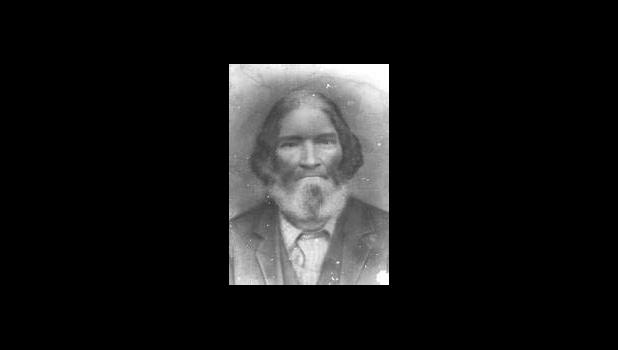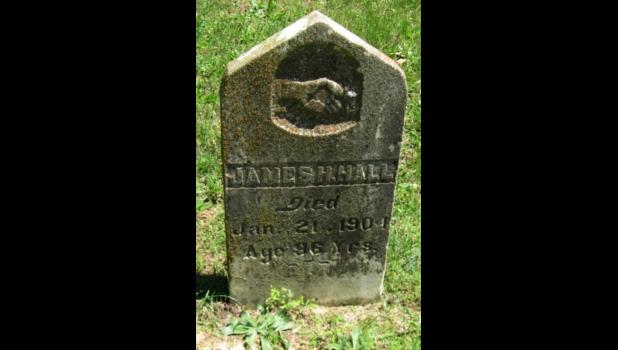The Racial History of Howell County Part II
Wed, 08/19/2020 - 12:57pm
admin
By:
Lou Wehmer
Predating Howell County, the extended Hall family arrived in the Pottersville area while it was part of Oregon County. Their life here was representative of people of color in this part of the county and the Ozarks. How African Americans were treated varied over the years, but there was always a struggle for equal treatment.
James Henderson Hall was born in Bedford County, Tennessee, in 1824. Census records show that for at least three generations, the Halls lived in Tennessee as free people of color. Henderson carried an affidavit from Marion County, Tennessee, attesting his ancestors were not Negroes, but of Portuguese descent. The document on file in the Oregon County, Missouri, Circuit Court records reads:
State of Tennessee, Maury Co., James Crawford, one of the Justices of the Peace, affirms proof by testimony that the said Thomas Hall is entitled to all the privileges of a free citizen. Thomas Hall('s) great-grandfather on his father('s) side was a Portagee and his great-grandfather on his mother's side was an Englishman and Thomas Hall('s) grandfather on his mother's side was an Irishman and his own father was of the Portagee descent and his mother was a white American woman. Sworn 19 Sept. 1835.
The reason this document was presented to the Oregon County Court at Thomasville in February 1853 was to satisfy the court that a free black man was not emigrating to Missouri illegally. As mentioned earlier, free blacks were prohibited from coming into Missouri since the state was formed.
Hall and other members of his family did not come into Missouri directly from Tennessee. They had lived several years in Marion County, Arkansas, where presumably they had presented the same affidavit to authorities. The 1850 Census shows at least twenty-two free black households living in Marion County, so likely the sheriff was ignoring the fact that a black community was flourishing in his county in a slave state. Henderson Hall was doing pretty well in Arkansas, showing up on the tax rolls in 1848 with three head of cattle and three horses. The free black population in Marion County doubled from 1843 to 1848, but shortly after, at least eight departed. Henderson Hall was accompanied by his father Thomas Hall and brother Leonard Hall when he moved from the White River hills of Arkansas to what was then Oregon County, today part of Howell County.
Looking at the first owners of land in the area, we find the Halls around Tingler Lake in Howell County, along the South Fork of Spring Creek, a couple of miles south of today's Arrowhead Lakes. Henderson and Leonard Hall owned some of the first land purchased there in 1859 and 1860 by cash entry from the government land office. Additional blocks of land were acquired under the Homestead Act by the Halls, making them the largest landowners in that area.
While the civil authorities seem to have been satisfied that Henderson Hall's dark skin could be accounted for, the issue of race would haunt Henderson and his descendants for years.
When he first arrived in Howell County, Henderson Hall found employment working near his home on the farm of Fred Collier, a prosperous farmer living in the valley adjoining West Plains. Collier's daughter became enamored of Henderson, though her father forbade any relationship. The young couple was undaunted, and family lore states that one day Frederick Collier went into town for supplies, and Henderson stole Sarah. They were married in August 1855.
From all accounts, Henderson and his wife, along with additional family members living nearby, were in a harmonious relationship with their neighbors and the community. The area became known as the "Hall Community," with Henderson as its leader.
When the Civil War broke out, Henderson Hall took an unpopular stance, siding with the Union. He was soon forced to flee the county along with many other Union families in the area. Henderson joined the Third Missouri Cavalry as a private in November 1862, while his wife and children took up residence in the state of Illinois. On his enlistment papers, he is shown as being over six feet tall with dark eyes and hair, but apparently, he satisfied recruiters of his racial status. At the time, black men, free or unfree, were not allowed in the Union Army. Henderson was now thirty-seven years old, his wife ten years younger. They had two children, one aged three, the other less than a year old.
The Union Third Missouri Cavalry was raised at Palmyra, Missouri, but soon was headquartered and operated the first part of their existence in the south part of Missouri. Many of its soldiers were, like Henderson, expatriates driven from their homes in South Central Missouri. They soon developed a reputation of being efficient guerilla fighters who showed no quarter to the enemy during or after a fight. The first months of Henderson's service brought him back to his home territory. In January 1863, the Third Missouri was at Rolla, and on the eleventh day of January found themselves fighting in the Battle of Hartville. A Captain in Hall's regiment was killed in the battle. From there, they were ordered to join General John Davidson's Army of the Southeast on its march that would terminate in Howell County, at West Plains, with a single cavalry foray into Arkansas near where he had previously lived.
It was to be a long war for Henderson. He once had a horse shot from under him, and fighting took him deep into Arkansas until he was mustered out of service in June 1865. He was very ill.
Henderson returned to a full and respected life upon his return to Howell County. He went on to have a total of eight children. The West Plains Gazette in 1904, writing about his life stated,
"Henderson Hall was the father and leader of the people residing in what is known as the 'Hall Settlement,' eight miles southwest of West Plains. Whenever any person in the settlement became ill or got in trouble, they always came to Henderson Hall. He gave them advice and told them what to do in their troubles. Everyone beloved and respected him."
It wasn't as easy for other free blacks living here. Though I mentioned in a previous article, some Howell County slaves remained with their masters following their emancipation. The general trend for African Americans was to leave the county in the years following the Civil War. Land wasn't easily acquired if they didn't already have money. By 1870 we followed a trend statewide where the census revealed there were fewer African Americans living here than before the war. In small communities, the pattern of migration was away to large cities in Missouri, where a better employment opportunity existed.
"Jim Crow Laws," establishing legal segregation beginning around 1880, were confirmed in a Supreme Court ruling in Plessy v. Ferguson in 1896. The law stated separate facilities for black and white citizens were constitutional, allowing segregation of schools and public facilities. So Hall's record as a good citizen and an exemplary soldier now mattered less than the color of his skin. The 1904 Gazette article summarizes Henderson Hall's and his family's experience:
"The sons and daughters that came to bless the home of Henderson Hall and wife grew to manhood. Some of them were married, and they, in turn, had children. These children were all of the same dark complexions as their grandfather, Henderson Hall. Although neither their father nor mother were of pure white complexion, the children invariably had dark skin."
"About 15 years ago (1888) when the school enumeration was made in the 'Hall Settlement,' the children of the tribe of Hall were enumerated as "colored." They were denied admission to the district school, and then the trouble began."
"The Halls began mandamus proceedings (order of the court to inferior government officials) to compel the school directors to permit their children to attend the school held in the district. When the case came up for trial in the Howell County Circuit Court, a change of venue was taken, and the case sent to Texas County.
"Upon the case being submitted before Judge Woodside at Houston, H. D. Green, attorney for the Halls, conclusively showed to the satisfaction of the court, that there was no Negro blood coursing through the veins of the Hall children. He had several of them present, each with his hair closely cropped and looking as though they had just come out of a bandbox. Photographs of several of Henderson Hall’s ancestors were produced and also locks of their hair, all of which went to prove that Henderson Hall and his descendants were not Negroes, but descendants of Portuguese. Judge Woodside decided the case in favor of the Halls, and they were permitted to attend the district schools again."
It's interesting to note that John R. Woodside was employed as the country clerk in Oregon County when Henderson and his family filed the affidavit, basically stating the outcome of the court case. Colonel William Monks, a political arch-enemy of Judge Woodside, also served as an attorney for the Halls.
Henderson never learned to read, always signing legal papers with an X. The 1880 Federal Farm Census showed him living on and owning his land, and depicts a successful farmer. His children owned surrounding farms, some of the same size or a bit smaller.
Though things in Howell County were settled, the Halls continued to be plagued by school officials wherever they went during the Jim Crow period. In 1910 one of the Hall children faced the same problems trying to enroll their children in a Muskogee County, Oklahoma, school. They filed a ten thousand dollar damage suit against that school.
In 1881 Henderson Hall received a $4.00 per month pension for his service to the United States, which he collected until his death. His wife Sarah, who he always called Sally, died in 1888. Henderson lived on until 1904 when one local paper cited his age as being 105. His tombstone, still standing in the Evergreen Cemetery at West Plains, recorded his age as ninety-six.
Henderson Hall's accomplishments were many. Several families still living in this area are in his bloodline, some with darker skin color, some not. For me, the tragedy of this story is that court case involving his grandchildren. Their qualification to attend public school was based on the ruling that instead of all children, regardless of race, being entitled to an education, they were allowed entry based on the premise they weren't really African American. In the Jim Crow era, Howell County established schools separating white from black. We will further explore the story of our racial history in Howell County in our next issue.


